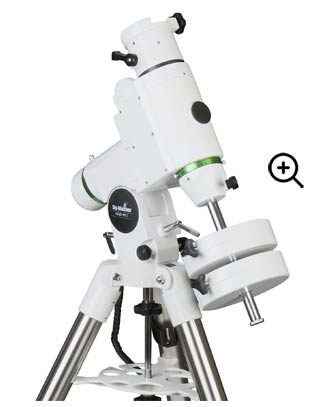Backyard of the Week | September 13, 2021
The AstroBackyard Backyard of the Week highlights astrophotography setups from around the world. A “backyard” can be a balcony, driveway, garden, or wherever else you set up astrophotography equipment at home.
By taking a behind-the-scenes look at the equipment amateur astrophotographers use to take deep-sky images, you can get a better understanding of the process.
This week’s backyard astrophotography equipment profile comes to us from Andy Latta in Australia.
Location: Langkoop, Australia
Andy Latta
Andy has the pleasure of taking astrophotography images from his Bortle Scale Class 1 location in western Victoria. That’s right, Andy’s backyard is as dark as it gets.
To make you Northern Hemisphere astrophotographers even more jealous, remember that from this latitude, the Milky Way core rises high into the sky overhead.
Lagoon Nebula by Andy Latta
Andy has taken some incredible deep-sky images of galaxies and nebulae since he began the hobby. Andy took the image of the Lagoon Nebula shown above using his Newtonian Reflector telescope and Canon DSLR camera.
Andy’s Equipment
| Primary Imaging Camera | Canon EOS 450D |
| Primary Telescope | Sky-Watcher Black Diamond 150mm Newtonian |
| Telescope Mount | Sky-Watcher HEQ5 |
| Filter | Astronomik H-Alpha 6nm |
| Guide Camera | ZWO ASI120MC-S |
| Software | BackyardEOS |
What does Andy love most about his gear?
“Simple and quite cheap”
Carina Nebula by Andy Latta from Bortle 1 skies.
The Camera
Andy uses a Canon EOS 450D (Rebel XSi) DSLR camera to capture images through his telescope. Despite being over a decade old, the 450D is a very capable camera for deep-sky astrophotography.
My first “proper” astrophotography camera was a full-spectrum modified Canon EOS Rebel XSi. This camera features a 12.2 MP CMOS sensor and can mount Canon EF and EF-S lenses.
Canon EOS 450D
The Filter
The Astronomik H-Alpha 6 nm allows Andy to isolate and capture impactful light emitted by hydrogen gas in the night sky. This is the clip-in model that can be mounted inside of the Canon camera body.
A narrowband filter (particularly Ha) is a handy option for DSLR astrophotographers that wish to collect data on moonlit nights, and add dynamic details to existing emission nebula projects.
Astronomik Ha 6nm
The Telescope
Andy uses a Sky-Watcher Black Diamond 150mm Newtonian Reflector telescope to capture deep-sky objects in the night sky.
This telescope features a versatile focal length of 750mm, which is well suited for large nebulae projects, and medium-to-large-sized galaxies.
The Southern Pinwheel Galaxy by Andy Latta
Sky-Watcher Black Diamond 150mm
- Type: Newtonian
- Diameter: 105mm
- Focal Length: 750mm
- Focal Ratio: f/5
- Weight: 10.86 lbs (4.93 kg)
Sky-Watcher Black Diamond 150mm Newtonian
The Telescope Mount
The Sky-Watcher HEQ5 Pro is an intermediate-level GoTo computerized telescope mount. This is a reliable choice for astrophotographers looking to shoot long-exposure deep-sky images through a telescope.
The HEQ5 has a maximum payload capacity of about 30-pounds, so keep that in mind when deciding on your next mount for astrophotography. The larger Sky-Watcher EQ6-R Pro increases the capacity to about 45 pounds.
Sky-Watcher HEQ5
The Guide Camera
The ZWO ASI120MC-S is a planetary imaging camera and guide camera with a 1.2 MP CMOS sensor. Andy uses this camera for autoguiding his primary imaging telescope, and for planetary work.
ZWO ASI120MC-S
Here is a recent photo of the planet Jupiter Andy captured using his Newtonian Reflector and the ZWO ASI120MC-S.
The Planet Jupiter by Andy Latta.
Thank you for sharing your backyard astrophotography set up with us, Andy! You can view his astrophotography on Instagram.
Be sure to fill out the form to submit your backyard for a chance to be featured, and don’t forget to include your Instagram handle to help grow your following.
View the Backyard of the Week Archives









